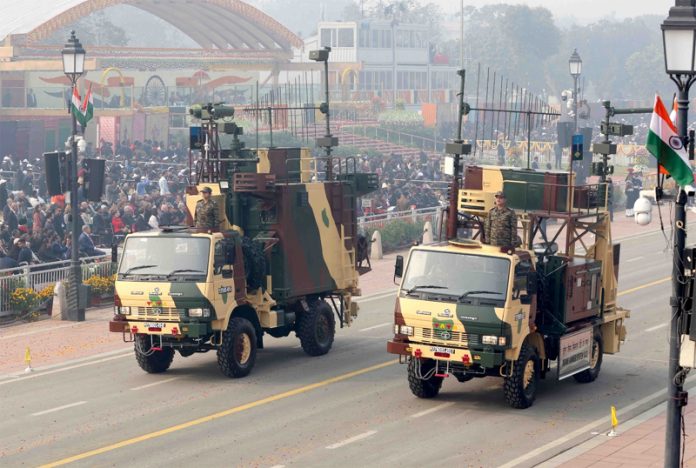India marked its 76th Republic Day with grandeur, showcasing the nation’s military prowess, technological advancements, and cultural vibrancy. The celebrations were an emphatic statement of a self-reliant and secure India. The tri-services tableau, a first in Republic Day history, was a vivid depiction of the armed forces “jointness” in operations across land, air, and sea. The Arjun battle tank, Tejas fighter aircraft, and Advanced Light Helicopter reflected India’s progress in indigenising its defence systems. Aptly themed “Shashakt aur Surakshit Bharat” (Strong and Secure India), the tableau was a clear message of India’s readiness to defend its sovereignty and its strides toward self-reliance in defence technology.
President Droupadi Murmu’s presence as the supreme commander of the armed forces set the tone for the celebrations. The 61 Cavalry regiment, leading the mounted column, was a poignant reminder of India’s military heritage. The regiment, the world’s only active horse-mounted cavalry, symbolises a legacy of bravery and discipline. The parade’s mechanised columns, including displays of the T-90 Bhishma, BrahMos supersonic cruise missile, and the NAG missile systems, showcased India’s cutting-edge defence capabilities. These indigenous systems underscore the nation’s commitment to reducing dependency on imports and achieving technological self-reliance.
The Indian Navy’s tableau was another highlight, emphasising “Aatmanirbhar Bharat.”. Featuring the newly commissioned INS Surat, INS Nilgiri, and submarine INS Vaghsheer, the display reflected India’s advanced shipbuilding capabilities. The naval contingent’s participation further reinforced the message of a robust and self-sufficient maritime defence force, essential for protecting the nation’s interests in the Indo-Pacific region.
Equally impressive was the Indian Air Force’s contingent and aerial display. The flypast, with 40 aircraft and helicopters, was a visual spectacle of precision and power. Formations like “Dhwaj” and “Vijay” underscored the synergy and expertise of the IAF, while the Rafale’s Vertical Charlie manoeuvre provided a thrilling conclusion to the aerial show. This demonstration of airpower not only showcased India’s defence capabilities but also served as a reassurance to its citizens of the armed forces’ preparedness.
Another significant feature of the parade was the participation of women officers and contingents. From Lieutenant Colonel Ravinderjeet Randhawa to the all-women CRPF contingent led by Assistant Commandant Aishwarya Joy M, the presence of women reflected the growing inclusivity and empowerment within the armed forces. This representation of “Nari Shakti” aligns with India’s broader commitment to gender equality and empowerment.
The DRDO’s tableau was a testament to India’s scientific prowess. The display, themed “Raksha Kavach,” featured advanced systems like the Pralay missile, quick-reaction surface-to-air missile, and drone deterrence systems. These cutting-edge technologies underline India’s capability to address multi-domain threats and bolster its defence readiness.
The participation of a 352-member Indonesian contingent added a unique dimension to this year’s celebrations. This historic first highlighted the deepening defence ties and cultural exchange between India and Indonesia. Such gestures of camaraderie are essential in fostering mutual respect and collaboration in a rapidly changing geopolitical landscape.
The parade’s cultural segments vibrantly showcased India’s diversity and heritage. From the Assam Rifles to the NCC and NSS contingents, the enthusiasm and discipline of the participants were inspiring, especially the youth who symbolise India’s bright future. One of the most captivating displays was by the Corps of Signals’ Dare Devils motorcycle team. Their breathtaking stunts and formations, such as the Human Pyramid and Lotus, exemplified courage and coordination. This segment and the veterans’ tableau paid homage to the sacrifices and contributions of India’s armed forces, past and present.
As the celebrations concluded, the overarching message was clear: India’s strength lies in its unity, resilience, and self-reliance. The Republic Day parade was not just a display of military might; it was a celebration of the spirit of India-a nation that has embraced its diversity, upheld democratic values, and pursued progress with determination. On Republic Day, as the world watched, India reaffirmed its global position as a strong, secure, and self-reliant nation.


